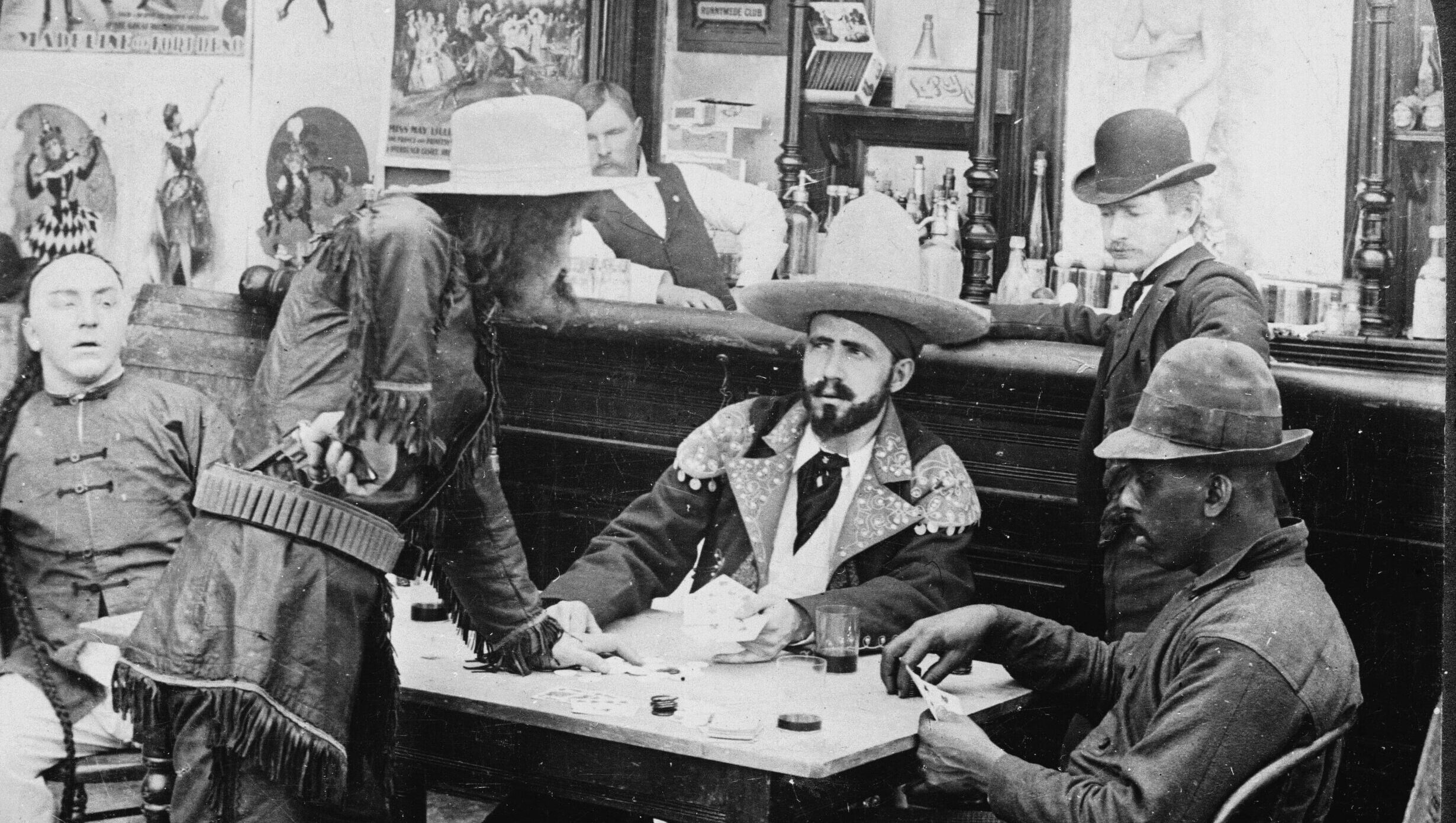Shadow Box: Poems
by Fred Chappell
(Baton Rouge, LA: Louisiana State University Press, 2009)
Fred Chappell begins his latest collection of poetry by quoting Montaigne as a wry challenge to the reader: “It is a wonderful testimonie of our judgments imbecilitie, that it should commend and allow things, either for their rareness or noveltie, or for their difficultie, though neither goodnesse or profit be joyned unto them (Montaigne, Essays, bk. 1, chap. LIV: ‘Of Vaine Subtlities, or Subtill Devices’).” By way of this citation as the foreword, Chappell is warning the reader that the poems to follow employ unusual or innovative techniques and structures in order to relate theme to form in a deep and dramatic way. The title of the book refers to a glass-covered case with a dark background against which to display and illuminate objects; just so, the poems in this book’s five sections are, as Chappell says in his prose note to part 1, “poems-within-poems (enclosed, inlaid, embedded, double, nested )” whose purpose is to present various perspectives simultaneously. Italics are used to distinguish what I will call henceforth the self-contained embedded poem from the full poem of which, read in another way, the embedded poem is a part, like an object in a shadow box.
In part 1, the poem “Searchlight” is a special form of Gerard Manley Hopkins’s shortened or curtal sonnet. In this case, the sestet is contained within the octave:
The hamlet sleeps under
November stars.
Only the page of numerate
thought toils through
The darkness, shines on
the table where, askew
And calm, the scholar’s lamp
burns bright and scars
The silence, sending through
the slot, the bars
And angles of his window square, a true
Clean ray, a shaft of patient
light, its purview
Lonely and remote as
the glow of Mars.
With remarkable artistry, Chappell rhymes the embedded sestet in itself while the full poem rhymes as well. The full poem includes the toil and isolation involved in scholarly activity; the embedded poem presents only the finished page now serenely detached from the labor that produced it. In the sonnet “Stopping by the Old Homestead,” the speaker contrasts loud, fast-paced urban life with a quieter agrarian upbringing:
The Interstate is audible from here.
Five miles east, its low
autonomous hum
disturbs the stillness that
then stood, the calm
you found when you came
here last time, eight years
ago, climbing the same
hard road you toiled
in youth that slants a steeper grade today,
this path by the twisted apple
tree whose shadow
tensely holds a darker tone. You breathe
harder than when you
stopped to see this farm
back then, where claims your
life had made against
the future and never paid
to own decayed.
Old times shriveled and
largely gone, you think,
and trudge all down the
hill to find your Chevy
rust-eaten, blind, jacked
up on cinder blocks.
Here, the full poem includes personal and historical details—the interstate, the eight years, the Chevy—while the embedded poem distills the essence, the embodied theme, in language that reveals a mythic pattern recessed within the full poem. Such embedding works in another manner when two radically different perspectives are held in dramatic tension in “The Caretakers”:
We tend the grave of the broken son
of man.
We keep the silent house
without a hearth
Wherein the man with vacant
stare and gaptooth grin
Calmly searches his gleamless
night of earth,
Aloof, in sober, patient state alone,
Bemused, aware or unaware of stone
That spells his name and
final date. Again,
Fresh flowers stand boldly
in the light cold rain
Amid the winds that scour
down from the north.
We are the grass, the rain.
We are the sun.
The full poem is spoken by and seen from the perspective of the grass, rain, and sun; the embedded poem is seen from the very different perspective of the dead man within his buried coffin. Finally, from part 1, in another subtle employment of the shadow box, the poem “Narcissus and Echo” counterpoints Narcissus’s self-regard with a brief, fragmentary answer by Echo. Echo’s italicized responses can be read over against the lines they end, and they also make a poem in and of themselves when read down the page.
Shall the water not remember Ember
my hand’s slow gesture,
tracing above of
its mirror my half-imaginary airy
portrait? My only belonging longing,
is my beauty, which I take ache
away and then return as love of
of teasing playfully the
one being unbeing.
whose gratitude I treasure Is your
moves me. I live apart heart
from myself, yet cannot not
live apart. In the water’s tone, stone?
that shining silence, a flower Hour,
whispers my name with
such slight light,
moment, it seems filament of air, fare
the world become cloudswell. well.
Part 2 begins with another guiding prose note by Chappell. This part will “center upon visual images” and make use of close-ups and longer shots as in a film. With its punning title, the poem “Cross Sticks” (acrostics) has lines whose first and last boldfaced letters spell vertically the name of the Virginian poet Dabney Stuart. The historically close-up images are in stanza 1; the historically longer-shot images are in stanza 2. The crossed sticks seem to be the opposing perspectives of Stuart and Chappell on the one hand and contemporary Americans on the other. The poem is about the loss of historical memory:
Don’t Look Back, your
early title advised,
An irony that our America
Believes implicitly. The country club,
Neon fast-food strip, tanning salon,
Emerge from seeming
nowhere into time,
Young for an hour, frowsy for a day.So soon our images
effloresce and pass
That we who try to fix
them to a point
Understand that San Pietro, Dachau,
Anzio, inconceivable Iwo Jima,
Rest forgotten, their
shrieking, mortal hour
Transfigured to silence
in the silent night.
The very skill and informed intelligence needed to make this double acrostic poem work are an implicit commentary on the historical unawareness of so many Americans today. Complementing such a poem on the current scene is “Passage,” an evocative depiction of a pond at night in which the distant moon and stars are brought close to us by way of reflection on the water:
The solemn pond displays
the summer night
Perfect in the rondure
of its speculum,
The sky set out in order,
light by light.
Serenely a muskrat noses
through the lines
Of stars; the cool reflective moon sways in
The water that trembling
languidly but once
Now settles, steadies itself
again, and shines
Impassive within the
astonished O, again
Moveless, upon the water’s
plane immense.
Something has happened
in the world this night
Of rare consequence for some
time to come,
Whether or not it alters the final sum.
The full poem is precisely descriptive yet also subtly suggestive of philosophical concerns such as the relation between movement and stasis, a thing and its reflection, order and chaos, cause and effect, an experience and the understanding of the experience, beginnings and endings. The embedded haiku-spirited poem presents the central action of the full poem without commentary or interpretation. There are many other excellent poems in part 2, including the poem “Janus” whose thin embedded poem serves like a long hinge on a swinging double door, but a final exhibit here will be “Once, Something, Never.” Its title plays off Robert Frost’s poem “For Once, Then, Something” about looking for, perhaps momentarily glimpsing, and then trying to understand an elusive thing in the bottom of a well. Chappell’s poem gives two interpretations of what Ezra Pound called a “magic moment”:
It lingers beyond the
threshold of recall,
an incident that was no incident,
a moment something like
a knothole in a wall
of pine, within the striate
grain an opening,
rupture of the swift flow
of days which sped
unhalted, that gave a placket
glimpse of happening
complete, of one bright image
that stamps, even now
vivid, with its moment of amaze. It fled
at once, its joy upon the brain a glow
expired, and the ever-
yearning soul has fed
upon what was only a presentiment
of something that was
that never was at all.
In this case the full poem doubts the reality of the magic moment, whereas the embedded poem evokes that moment in such a way as to affirm its reality. Such a vacillating tension between belief and disbelief is perhaps a more comprehensive presentation of the experience of such moments than choosing one viewpoint finally and definitely over the other.
Part 3 of Shadow Box concerns reliquaries—both actual and figurative. In “The Opulent Reliquary” a humerus from John the Baptist is reverently defined as such in the embedded poem while the full poem is more skeptical: “This reliquary was cast of silver and gold / In fourteenth-century Aachen. I am told / It hath performed many a miracle / For those who have lost faith or fallen ill. / / Why then could it not prevent such harm / To him who lost his head before his arm?” Thus doubt and faith are nicely balanced. “The Re-Emended Reliquary” pokes gentle fun at the process of identifying a relic:
The structure of this
silver countenance
Is known: Inside the visage
of gold enchased
With gems there stands a
core of wood to support
The mask, enclosing the
saintly skull, all grin
And socket, of the fulgent,
haloed head that once
Was that of James, as we
were told this past
Decade in the stately papal bull. Report
Now comes it is St.
Matthew’s once again.
Here the embedded poem is a relic inside the reliquary of the full poem, which, like a shadow box, casts an angled light on the identity of the relic held within. Too long to quote here in full, “A Conceit,” appropriately written in the demanding Sapphic stanza, envisions the fragments of Sappho’s poetry as relics contained within the reliquary of scholarly apparati. Stanza 2 is as follows: “Picture that massive volume of thought as costly container, / Gold and enamel ornate with fine filigree, / Sappho’s tense lines all nested within like bones of the saintly, / Patient for worship by love-addled women and men.” Lines from Sappho are also translated and embedded in the poem.
The poems in part 4, as the note to this section indicates, are poems of counterpoint in which “a debate or dialectic is established between the two ‘melodic’ lines, but these dissensions or complementaries are designed to produce a final harmony.” The poems range widely over many topics: spirit and body, knowing and not knowing, friendship (his view and hers), telling secrets and not telling, stasis and permanence. “Bachsmusik” presents two views of Bach, the full poem being critical in the voice of one detractor and the embedded poem affirming in a voice of general acclamation:
“His concertos make me dizzy,”
said Hermann Broch,
“And all those dense
chaconnes of J. S. Bach.
I feel the lines crisscross
and then they go
Apart; and then crosscriss till vertigo
Ensues, and then the notes
will pass each other
Like swifts in flight and
now repass another
Time and place and tightly
weave, disjoin,
Return again and interweave, in line
On line on line, like cresting
wave advancing
Beachward to crowd on
tumbling wave, all dancing,
Leaping, retreating, surging
forward, back,
Until I feel quite ill,” said
Hermann Broch.
Like several other poems in this section, “Counterpoint” presents interwoven voices—here, those of stone and water—that show how the eternal is reflected both in stasis (the rock) and change (the water):
Stone. Water.
1
I have attested all that I may be:
but all that I may be is yet to know;
what you find in me is as you see;
thwarted, I find out strange ways to flow;
here stand I image of eternity;
where once I was I am never now.2
My surface recreates the land and sky;
who mirrors not, that
being is content;
I show things moving yet they pass not by;
and I am I and need no other consent;
I change and change but hold my identity;
I keep my strength when
all beside is spent.
The final poem in part 4, “Duet,” addresses the poetic artistry displayed in poems such as the ones in this book:
Author. Book.
Go, little flustered one, and tell
what things are beneath, beyond
us beings whose timid senses fail
the world that lies on every hand,
our aspirations shall not quail,
our destinies shall not confound.A steely wisdom I impart,
though it be only poetry,
confected with laborious art,
for those who have the means to see,
it carries sharp into the heart,
it lodges there until they die.
Surely “steely wisdom” and “confected with laborious art” are hallmarks of the poems in Shadow Box.
Part 5 brings this collection to a magnificent conclusion by quoting untranslated lines from two ancient Latin hymns and then translating and elaborating on those lines while also integrating, in sequence, the syllables from the Latin into the English lines of the poem. By way of such devices, Chappell demonstrates in the very essence of the poems themselves how Latin is embedded in English just as the past is embedded in the present. Here, reassembled from their separate positions in Hymn 1, are the words of the original hymn as translated by Chappell into English:
Come, fecundive Ghost,
Visit this worldly host,
Flood with supernal grace
Us, Your created race.Light to our senses give;
Into our hearts bring love;
To our frail weaknesses
Supply firm steadiness.Through You the Father is known,
Through You is known the Son.
Grant that we comprehend
How You from them descend.
The following lines are from Chappell’s expansive commentary on “our frail weaknesses”:
Forgive the sullen, willful ignoramus;
Forgive the smug, the damfool,
and the shameless,
The thug, the cruel and
manic patriotic,
The snitch, the trembling,
self-deceived neurotic,
The seeker after nostrums,
the tainted juror,
The mountebank and
scamming usurer,
The hatred-monger, the
quester after gurus,
The fixer, liar, the humbug
with a screw loose.
Hymn 2 concerns God as creator and protector and his relation to us through his incarnate Son. Thus Shadow Box ends with a translation-within-poem on God as the first and ultimate creator whom poets can but imitate at one remove. In addition, both hymn-poems suggest that the deepest embedding in the created order of things is the interrelationship among the Persons of the Trinity and Christ’s incarnation in human form. Hymn 2 closes with these lines—the first four original and the second four in translation:
Regnant Father, attend us as we fare
Toward the night of our viaticum;
Sanction the passions that
within us loom;
O Founder Spirit, use
us all each hour.Support us, Father Omnipotent,
With Christ Jesus stand our friend
And with the Holy Ghost benevolent
From all Beginning to the End.
The afterword to this book, like its foreword, is from Montaigne. Montaigne’s words, as was the case with the Latin in the hymns, surely become Chappell’s own when the poet’s voice unites with that of another literary inventor, not of shadow-box verse but of the essay: “Loe here are wonders, we have more Poets than judges and interpreters of poesie. It is an easier matter to frame it, than to know it: But the good and loftie, the supreme and divine, is beyond rules, and above reason (Montaigne, Essays, bk. 1, chap. XXXVI, ‘Of Cato the Younger’).” Thus are the “good and loftie” poems of Shadow Box encased within the opening and closing prose of Montaigne, verse-jewels also handsomely inlaid in this beautifully designed and printed book from LSU Press. ♦
David Middleton is poetry editor of Modern Age.














